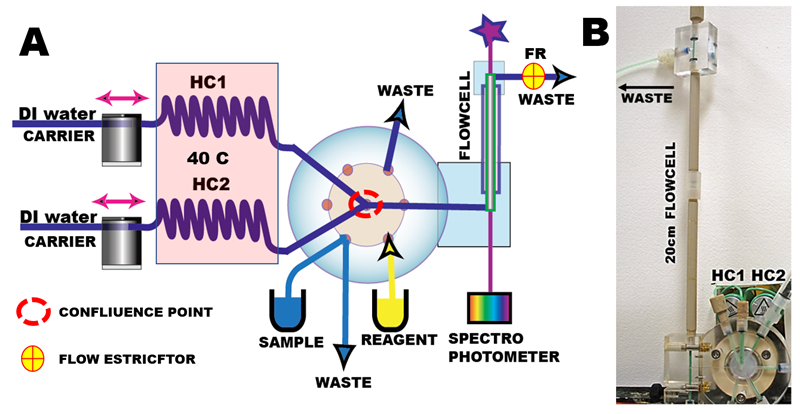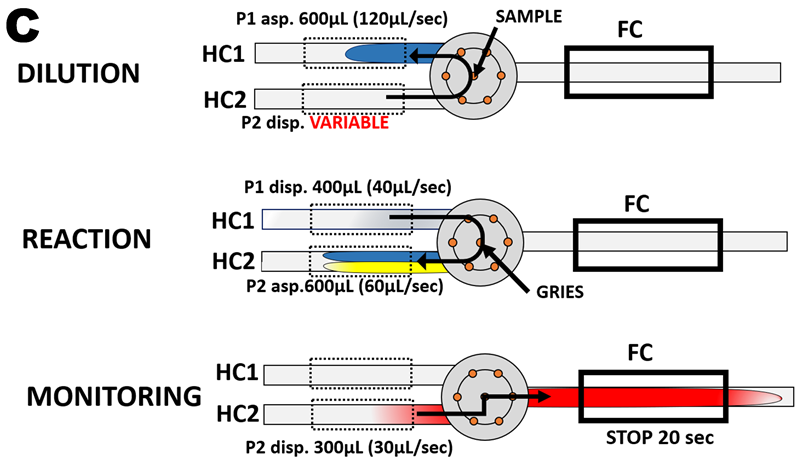3.2.5. Autocalibration by Single Standard Solution
Flow based analyzers must be frequently calibrated because their response to analyte concentration varies, due to changing flowrates and reagent composition. The calibration is performed by analyzing samples prepared by pipetting decreasing volumes of stock standard solution into a fixed volume of a diluent. However, preparation of series of standard solutions and their analysis is laborious and prone to error, and therefore it is desirable to automate this process. While for serial assays calibration is usually performed twice/day, in research setting is performed far more frequently, because development and optimization of reagent-based assays is guided by comparison of numerous calibration runs.
Idea of auto diluting a single, most concentrated standard solution at the start of an assay cycle is obvious, but its execution is an elusive undertaking because continuous flow format is not suitable for metering variable discrete volumes and flow rates generated by peristaltic pumps are pulsatile and decrease in time. pFI –LOV instrument, on the other hand, delivers precisely metered volumes and flowrates because the pump –milliGAT– dispenses volumes with reproducibility of +/- 0.5 % over one-year period.
Principle of Single Standard Solution Calibration (SSSC) is introduced, explained, and documented here for the first time (Ruzicka 2021). Determination of nitrite and phosphate was performed on lab-on-valve platform (A) with miniSIA instrument equipped with 20cm long flow cell (B) for spectrophotometric monitoring.
 The flow protocol (C) comprises three steps where, in the first step, the dispensed volume of carrier – DI water- delivered by pump P2 is the variable controlling dilution of single standard solution.
The flow protocol (C) comprises three steps where, in the first step, the dispensed volume of carrier – DI water- delivered by pump P2 is the variable controlling dilution of single standard solution.

Hatta, M.; Ruzicka, J.; Measures, C.; Davis, M. Automated calibration by a single standard solution prepared in deionized water by flow programming eliminates the schlieren and salinity effects and is applied to the determination of phosphate in sea water of different salinities. Talanta 2023, 253, 124041.